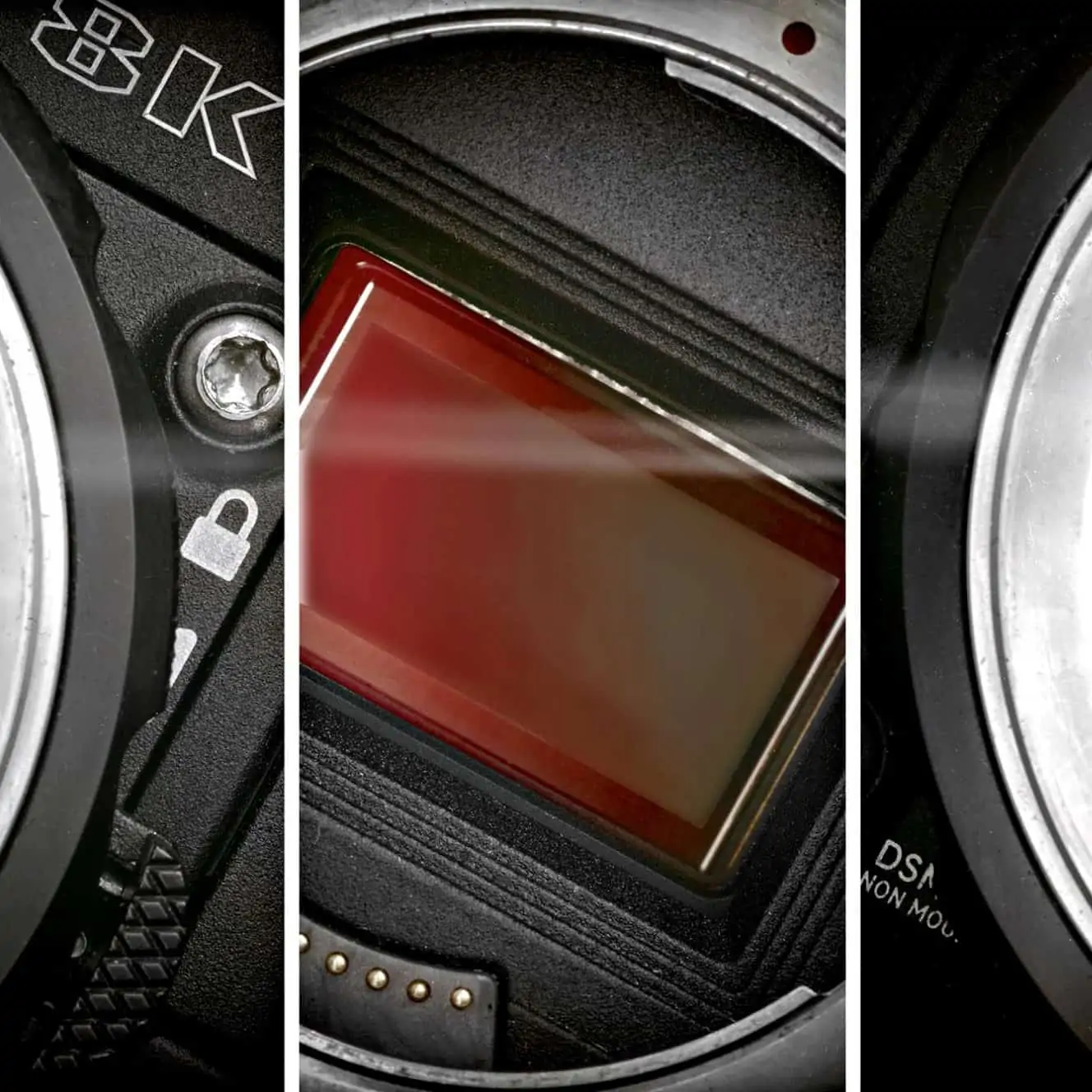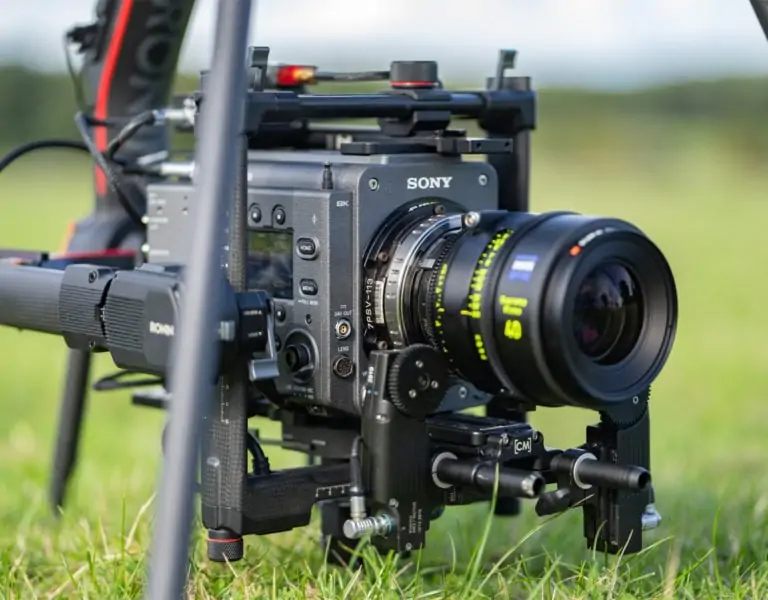SENSOR SENSIBILITY
There are more lens and sensor options to choose from than ever before. Exploring how the two can work together in harmony, cinematographers share their thoughts on the large-format phenomenon and their preferred combinations.
All things being equal, large format sensors ought to be an easy pick: more silicon converts more photons into more electrons, making for more resolution, more sensitivity, more dynamic range, or some combination thereof. In practice, though, picking a sensor size winds up highlighting exactly the way that lens and sensor performance interact.
Stephen Murphy BSC ISC begins by outlining exactly how all things are not equal. “Technically, you can make everything match on different sensors. You can swap the focal lengths out, stop down… but when I look at the kind of lenses I like to shoot on, which tend to not be the more modern lenses, the 35mm sensors and the 35mm lenses still feel different to me in a way I prefer.”
Nobody would argue that mathematics and geometry suggest that matching results ought to be possible. That assumes, though, that the performance of lenses follows the mathematics precisely, which it notoriously – or perhaps gloriously – doesn’t. “It might just down to be the distortion on the older lenses,” Murphy continues. “When I was testing for Atlanta we were looking at Panavision Primos, which is what we used the end. But I tested the PVintage, I tested Kowas and Baltars, which are all lenses designed for 35mm sensors, against the large-format stuff. I had Canon K35s, 65mm optics. It’s no surprise there was a difference when we looked at it.”
Given all that, Murphy’s primary concern is not sensor size, but lens compatibility. “When I did No One Gets Out Alive and we went with the Sony Venice in 6K, suddenly I was having to re-examine all my lens choices, thinking ‘oh, actually, that series of lenses doesn’t cover 6K… those cover but I don’t particularly like them because they’re a bit bland.’” Things have improved, he notes, but not enough to entirely obviate the issue. “That was two years ago and granted, Panavision has many more sets of lenses now, and Leica has some, but the large-format lens choice is not as good.”
As a result, Murphy says, “I’ve never picked a camera because of the sensor size. I’m very attracted to the Venice because it has 16 stops of range, and that’s why I’m going for that camera. You’re shooting a camera because you want the associated benefits of that camera, not because you need the resolution. The sensor size is irrelevant to me and to other people I know.”
BIG CHIP BENEFITS
Meanwhile, Erik Wilson BSC has made a virtue of the interaction between specific lenses and big chips. “I love the larger sensors, not necessarily for their intended use, but because I can pick different parts of the image circle,” he enthuses. “I like having the option to use the edges of a lens made for Super 35mm work by shifting the frame lines on a large format sensor.”
“On my current job, we’re shooting Alexa Mini LF, spherical 2.39. It’s a VFX-heavy film delivering 2K, so we shoot open gate 4.5K with 2.39 frame lines scaled to 90%.” Doing that, Wilson confirms, keeps all the options open. “It gives us lots of room for extra tracking and material for VFX around our frame, as well as lots of room for reframing in post.”
Wilson’s approach naturally requires careful communication. “In addition to our normal cantered frame lines,” he says, “we have two more frame lines set to the top or the bottom of the sensor, so we can find the lens falloff we like, depending on the shot.” Everyone involved, Wilson adds, has agreed a system of slating and metadata to make the intent clear: “There are metadata notes of which frame lines were used. That travels from the Mini LF through the whole post chain, and we mark it on the slate as well, of course.”
Panavision’s Aaron Kroger begins with much the same thought as Murphy, though he
points out that sometimes the equivalence only goes one way. “Large format can look like Super 35 – you can stop down, but it’s a lot harder to have Super 35 look like LF. If you’re shooting at a 2.8 on LF on a wide lens, it’s a wide field of view and a shallow depth of field. To do that on Super 35 is going to mean a really wide lens at a crazy fast aperture. Stopping down is always an option. Opening up is not.
“Then there’s the whole issue of what large format means. Does large format simply mean larger than Super 35mm, and if so, how much larger? One per cent, two? Because what often happens is that productions will take an LF camera but shoot in a sensor mode that is hardly bigger than Super 35mm.”
It’s a common approach, Kroger reports, for anyone keen to shoot Alexa for a client demanding true 4K. “On an Alexa Mini LF,” Kroger continues, “if you’re shooting a very common mode, the 4K mode, it’s just enough to be 4K and that’s only slightly larger than the Alexa Mini. The Mini was 3.2K, so you’re only going to 3.4K.” The additional few millimetres of sensor area, it seems, makes precious little difference to the camera department.
With Panavision renowned for its selection of lenses, though, Kroger’s thoughts turn quickly to the practicalities of maintaining that reputation in a new world of large sensors. “We’re fortunate to have a large inventory of large format glass because we have lenses from 65mm film days,” he says. “All of those way more than cover the twenty-four by thirty-six gate, and then there’s all our lens development now. We’re seeing large format lenses being used on Super 35mm productions just for their characteristics.”
While some traditional lens designs have been used on large-format productions using optical expanders, Kroger suggests that Panavision has had less need to do that, at least for its spherical lenses. “On the spherical side, we’ll have a large-format equivalent. If you come in and want Primos, instead of expanding a Primo we’ll suggest a Panaspeed. It’ll be faster and cleaner, but it’ll be an equivalent look.”
Anamorphics, Kroger admits, are a different matter. “A large format gate is a lot taller than four-perf 35 was, and that’s where we’re doing a lot of expansion.” At the same time, though, bigger sensors represent what’s still a very unusual opportunity for anamorphic lenses to operate as intended. “ARRI was the only company which made a four-by-three chip,” Kroger explains. “Everything else was Super 35 width but not Super 35 height. Now you can shoot anamorphic at full 18mm height in a cropped sensor mode on a large format sensor, which is something you could not do digitally, other than on ARRI, before.”
Even where lenses are intended to cover larger gates, there can still be surprises, as Kroger explains. “On the anamorphic side, some of the lenses have a really cool look, particularly on a T Series. But there are flares you can’t really see on a projector, or in simulations. You have to see it on a camera, and all the testing was on Super 35mm cameras because that’s what was out then. When we started developing DXL, we started seeing things we hadn’t seen before. Our classic blue flare, toward the edges, starts to shift to orange – but if you just look within the Super 35mm gate it was just the classic look.”
CLASSIC GLASS
Shift 4’s Colin Coomber summarises the large-format phenomenon in much the same way. “There are obviously some advantages to it. You can get more latitude because there’s less noise, because the photosites are that little bit smaller given the same sized display. But the main thing I think LF gives you is more separation from things through shallower depth of field, especially on wider frames. That’s the main difference.”
Coomber reports ongoing interest in classic glass, though with a detectable shift toward more modern designs – and not just to cover big chips. “If you’re shooting something for Netflix which requires an HDR delivery, vintage lenses may not be ideal. They flare, they have chromatic aberration, and sure, in standard dynamic range you have a nice little character to the image.” That expectation, though, might not be fulfilled given HDR delivery. “Once you put it into HDR, some of those flares might be super bright and super saturated all over your image.”
But there are considerations specifically related to large format shooting, too: “If you do go vintage on full frame, vintage only looks vintage if you’re toward wide open. So, it forces you into this extremely shallow depth of field, and I find that can be a bit of an issue. To get a workable depth of field, you might want to be working at T4, or T5.6, where your vintage lens looks nothing like it did. On clean lenses, though, on Supreme Primes, it all matches.”
Working in a rental house, meanwhile, means Coomber has encountered all the world’s differing attitudes to large-format cinematography, and at all levels of production. “Sometimes it’s short films and things that have no budget but want a Mini LF… ‘but I have no money!’ If you go Super 35 you can have all these cameras – even an Amira – but often they’re adamant they want full frame.” In the end, though, Coomber sums things up simply. “I think things will move toward cleaner glass at the high end of production… but we still see a lot of DPs wanting to test all the vintage stuff.”
If there’s an elephant in this room, it’s ARRI’s release – as this piece was being prepared – of a camera which solves the problem of achieving 4K on an Alexa without being required to use a large-format edition of the camera. Murphy hopes that “The Alexa 35 will have all the benefits of Sony Venice, but it is a 35mm sensor. Then you’ll see people making decisions to shoot on that camera because they want the high dynamic range, the dual ISO, and the high ISO. But the size of the sensor is not the selling point.”
With the company’s public relations team fully occupied with one of the company’s biggest releases in years, nobody from ARRI was available to comment, though it’s clear the new release will have some impact on a world that seems, at best, ambivalent about the necessity of large format sensors just for the sake of their size. Even so, as Panavision’s Kroger concludes, technical and creative realities may not always overlay one to one. “It’s art, and what’s better isn’t necessarily what’s technically better. They might choose to shoot a wide-open expanded lens on LF. Super muddy looking. Scientifically it is a worse image than alternatives, but that might be exactly what the cinematographer wants.”
















